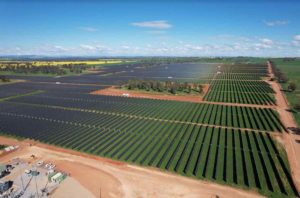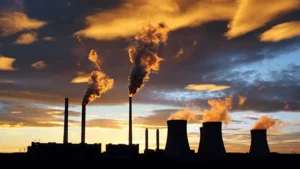Since the Covid-19 crisis began, Australia’s Morrison government has shown itself willing to cast off many of its long-held ideological positions, on everything from budget deficits to stimulus spending and minimum welfare payment levels.
But the government appears determined to hold onto its energy policy and the Australian Liberal Party’s obsession with maintaining Australia’s links with fossil fuels.
On May 4, the Morrison government launched its AU$300 million (US$193 million) Advancing Hydrogen Fund with a view to expediting the development of Australia’s hydrogen industry.
This had the potential to be a fantastic development. The Covid-19 crisis presents an enormous opportunity to reshape Australian energy policy. The massive COVID-19 stimulus package can be used to turbocharge renewables investments and could thereby manufacture the country’s energy, economic and environmental security.
The potential economic, environmental and geostrategic benefits of developing ‘green hydrogen’ from renewables are well established, and are outlined in the government’s own 2019 National Hydrogen Strategy.
Worryingly however, the government has made it clear that public funds should be used to support not just hydrogen from renewables, but hydrogen from fossil fuels as well — including coal and gas. In the government’s view, as long as fossil-fuelled hydrogen is produced using carbon capture and storage (CCS) technology, it should be considered ‘clean’.
This is problematic for numerous reasons — not least because CCS remains unproven when it comes to hydrogen production, generating significant carbon emissions.
To be sure, the government faces a major obstacle in its plans to promote fossil-fuelled ‘brown’ hydrogen: this recently-announced AU$300 million fund will be administered by Australia’s hugely-successful Clean Energy Finance Corporation (CEFC), whose mandate has always ruled out investments in CCS projects.
The government has a long history, however, of trying to dismantle the CEFC or dilute its ‘clean energy’ mandate.
As recently as 2018, the then Australian energy minister Josh Frydenberg, who’s now the federal Treasurer, introduced legislation to overturn the CEFC’s ban on CCS investments.
While Frydenberg’s push failed, changes to the CEFC’s investment mandate are now back on the government’s agenda, along with other controversial schemes to underwrite fossil-fuel projects with public funds.
Just as worrying is the language in which the government has couched its decision to plough ahead with fossil fuel developments — ‘technological neutrality’.
According to the government, Australia should maintain a ‘technologically neutral’ approach in the pursuit of energy security — that is, not show a preference for any particular kind of technological solution. The government maintains that all energy technologies — including hydrogen from renewables and hydrogen from fossil fuels — are equal.
The idea of technological neutrality is a dangerous myth. Different technologies have very different economic, environmental, social, political and geostrategic potential. Fossil fuels have negative potential in all respects.
Specifically, international investors and insurers are now fleeing fossil fuel-related projects creating stranded assets and vulnerable jobs.
Fossil fuels will worsen climate change, leading to disastrous economic and social consequences. The continued pursuit of fossil fuels will lead to further geostrategic competition and conflict.
By contrast, the potential for renewables is almost all positive. Renewables projects will create a suite of sustainable new industries and high-tech, high-wage jobs. By creating new renewables industries, Australia can lessen its exposure to international resource conflicts and create new geostrategic opportunities.
These include lessening Australia’s current economic overreliance on China.
An example of a green hydrogen export-oriented project that could be promoted under the National Hydrogen Strategy is the Arrowsmith Hydrogen project in Western Australia. It was announced in April 2020 by the company Infinite Blue Energy.
The AU$300 million (US$193 million) project envisages a green hydrogen plant located near Dongara, 320 kilometres north of Perth, which would produce up to 25 tonnes of green hydrogen a day, utilising wind and solar power to split water to produce hydrogen.
With support, the project could export Australian renewables in the form of green hydrogen by 2022.
Other companies will come forward if the government indicates that these projects will receive support in the name of diversifying exports to Asia.
The idea of a ‘technologically neutral’ approach to hydrogen promotion was fiercely contested during the development of the National Hydrogen Strategy.
On the one side stood the Australian Labor Party-led Queensland, Western Australia and Australian Capital Territory governments who argued, along with renewable energy experts, that public funds should never be used to support hydrogen from fossil fuels.
The Liberal Party premiers of the other states and their federal counterparts insisted on ‘technological neutrality’. Unfortunately, the fossil fuel supporters won.
If the government insists on ploughing ahead under the misleading rubric of ‘technological neutrality’, the environmental impacts of technologies should be taken into account to make a genuine level playing field for competition between renewable and fossil fuel sources of hydrogen.
The hidden costs of fossil-fuelled hydrogen should be carefully estimated by experts, especially those in the environmental field. With regards to future exports, overseas markets for brown hydrogen appear unlikely, given the enormous push underway to scale-up the use of green power.
Imported hydrogen will need to be certified as ‘green’, if the efforts of the South Korean and Taiwanese governments in recent years tell us anything. Put simply, betting on brown hydrogen may jeopardise any strategic value Australia can gain from moving quickly on green hydrogen.
If Australian government funding is provided to fossil-fuelled hydrogen projects, an exit strategy is needed. According to Australia’s Chief Scientist Alan Finkel, the inclusion of gas or coal with carbon capture and storage is to ‘add back two more lanes to our energy highway’.
Fossil-fuelled hydrogen should be complementary and temporary, not the main game.
Australia stands at a critical juncture. It has a once-in-a-lifetime chance to use COVID-19 stimulus to fundamentally change the nation’s economic, environmental and social future. Australia should reject the myth of ‘technological neutrality’ and grasp this opportunity with both hands.
Original story from East Asia Forum. Reproduced with permission.
Authors: Elizabeth Thurbon, UNSW, Hao Tan, University of Newcastle, Sung-Young Kim and John Mathews, Macquarie University
Elizabeth Thurbon is Scientia Fellow and Associate Professor in International Relations in the School of Social Sciences at The University of New South Wales (UNSW), Sydney.
Hao Tan is Associate Professor in International Business at the Newcastle Business School, The University of Newcastle.
Sung-Young Kim is a Senior Lecturer in International Relations at Macquarie University, Sydney
John Mathews is Emeritus Professor in Strategic Management at Macquarie University, Sydney.
The authors are chief investigators on a three-year ARC-funded Discovery Project (DP190103669) examining East Asia’s clean energy shift and the implications for Australia. This article is part of an EAF special feature series on the novel coronavirus crisis and its impact.










